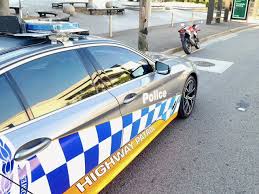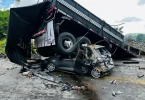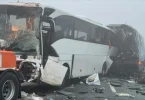Road safety is a collective responsibility, and the NSW Police Force plays a central role in safeguarding our roads. As a key stakeholder and the public face of road safety in New South Wales, NSW Police are actively involved in developing, enforcing, and assessing strategies aimed at reducing road trauma and enhancing traffic flow.
Their presence on the roads, combined with a commitment to education, enforcement, and community engagement, makes them a vital force in promoting safe driving behaviour and preventing accidents.
By collaborating with other agencies and applying data-driven insights, NSW Police help ensure a safer, more efficient road network for all users. Their dedication underscores the importance of shared responsibility in maintaining road safety across the state.
Read More: NSW Police and Their Critical Role in Road Safety
A Comprehensive Commitment to the 5 E’s of Road Safety
The NSW Police Force actively contributes to all dimensions of road safety by implementing and supporting the internationally recognised 5 E’s model. This model guides the approach to reducing road trauma and ensuring the free flow of traffic. Each of the E’s represents a pillar of a holistic safety strategy:
Engineering
NSW Police collaborate closely with road authorities and transport agencies to support the engineering of safer road systems. While they are not road engineers themselves, their on-ground insights are essential in identifying dangerous intersections, accident-prone areas, and systemic flaws in traffic infrastructure.
These observations are used to inform changes to road design, signage, and traffic control systems, directly contributing to long-term improvements in road safety.
Education
Through school visits, community talks, road campaigns, and public awareness initiatives, the NSW Police play a proactive role in educating all road users.
Whether it’s teaching new drivers about road rules, raising awareness of the dangers of distracted or impaired driving, or promoting the use of safety features like seatbelts and helmets, education is a key preventative measure.
Educational initiatives not only inform but empower individuals to make safer decisions behind the wheel. By demystifying traffic laws and road etiquette, NSW Police encourage a culture of compliance and personal responsibility.
Encouragement
Encouragement goes hand in hand with education. NSW Police actively promote safe behaviours through public recognition, community engagement, and strategic safety campaigns.
For example, during national road safety weeks or targeted operations like “Operation Safe Arrival”, drivers are not just penalised for wrongdoing—they’re also encouraged to maintain good driving habits.
This positive reinforcement strategy aims to make safety a community value, not just a legal requirement.
Enforcement
Of course, enforcement remains a core responsibility of NSW Police. Regular patrols, speed checks, random breath testing, and mobile drug testing are conducted to detect and deter unsafe driving.
The presence of police officers on the roads serves as a critical deterrent to reckless behaviour.Strict enforcement of road laws ensures that those who endanger others face appropriate consequences, thereby helping to reduce the risk of injury or death on our roads.
NSW Police apply a balanced approach—firm where necessary, but always guided by fairness and a focus on protecting the public.
Evaluation
Evaluation is vital to understanding what works and what doesn’t in road safety. NSW Police continuously monitor road safety performance metrics, evaluate the success of enforcement operations, and contribute data to broader traffic research initiatives.
This data-driven approach enables smarter policy decisions, helps refine traffic enforcement strategies, and ensures that public resources are allocated where they are most needed.
Managing Road Incidents: When Do Police Need to Attend a Crash?
In an effort to improve traffic flow and allocate police resources more efficiently, NSW Police do not need to attend all motor vehicle accidents.
Certain crash scenarios, known as “tow-away only crashes,” can often be managed without direct police intervention.This updated approach is designed to reduce congestion, minimise delays, and ensure officers are available to attend more serious incidents.
Incidents Where Police Attendance Is Required
- Police attendance is still mandatory in certain circumstances. If you’re involved in a crash, police must be called if:
- Someone is trapped or injured
- Police are needed to manage traffic or address safety hazards
- A driver appears to be under the influence of alcohol or drugs
- A bus or truck involved in the crash requires towing
- One or more parties fail to exchange details
In any of these situations, dial 000 immediately so that emergency responders can be dispatched as quickly as possible.
Incidents That Do Not Require Police Attendance
If the accident does not meet the criteria above and involves only vehicle damage, you do not need to wait for police. Instead, follow these steps:
Ensure Safety First
Move yourself and others to a safe location away from traffic. Turn on your hazard lights and, if possible, relocate your vehicle to avoid obstructing traffic.
Exchange Information
Exchange essential details with the other driver(s) or vehicle owner(s). This includes:
- Name and address
- Contact number
- Driver licence details
- Vehicle registration number
- Insurance provider information
- Arrange a Tow If Necessary
If your vehicle is not drivable, you can contact a towing company of your choice or your insurance provider to arrange vehicle removal. It is your responsibility to organise this unless it involves a bus, truck, or significant traffic obstruction.
Notify Police After the Incident
If any vehicle is towed from the scene, you must report the crash to the Police Assistance Line (131 444) as soon as possible after leaving the site.
Stay Calm and Document the Incident
Take photos of the crash scene, vehicle damage, and relevant road signs. This evidence may help your insurer process claims more smoothly.
What Is a Tow-Away Only Crash?
A tow-away only crash refers to a collision where no person is injured or trapped, and the only consequence is that a vehicle requires towing. In these cases, police presence is not mandatory, and you are encouraged to take appropriate steps to manage the incident without waiting for an officer.
This system has been put in place to reduce unnecessary delays for other road users and to allow police to focus on incidents that involve injury, serious risk, or law violations.
Reporting a Crash After Leaving the Scene
If a vehicle is towed as a result of a crash and you did not require police at the scene, you must still report the incident. Here’s how:
- Call the Police Assistance Line at 131 444
- Provide all relevant details, including:
- Date and time of the crash
- Location of the incident
- Personal and vehicle information for all parties involved
- Towing company details (if available)
- Request a Police Event Number, which may be needed for your insurance claim
Failure to report the crash (when required) may result in administrative penalties or complications with insurance claims.
The Role of Insurers and Towing Services
Your insurance company should be your first point of contact after ensuring everyone’s safety. Most insurers offer roadside assistance and towing services, and they can guide you through the claims process.
- In the absence of police at the scene, insurers often require:
- Photos or documentation of the crash
- A police event number (if towed)
- Contact information for the other party involved
Choosing a reliable towing company is equally important. NSW maintains strict licensing and operational standards for tow truck operators. You can choose a service provider, or one may be dispatched through your insurer or roadside assistance service.
Working Together for Safer Roads
The NSW Police Force remains at the heart of the state’s road safety strategy. From proactive enforcement and public education to data collection and policy feedback, they are committed to reducing the human and economic toll of road crashes.However, the responsibility doesn’t rest with police alone.
Every road user—from pedestrians and cyclists to drivers and passengers—has a role to play in keeping our roads safe.Understanding the appropriate steps to take after an accident and respecting the criteria for police involvement are crucial parts of this shared responsibility.
By working together, we can continue to drive down road trauma and build a safer, more efficient transport network for everyone in New South Wales.
Frequently Asked Questions (FAQs)
What is the role of NSW Police in road safety?
NSW Police play a critical role in promoting road safety across New South Wales. They are involved in all aspects of the “5 E’s” of road safety: Engineering, Education, Encouragement, Enforcement, and Evaluation. Their work includes traffic enforcement, community education, crash investigation, and collaboration with other road safety stakeholders.
Do I have to wait for police to arrive at every accident?
No. In New South Wales, you are not required to wait for police unless the crash involves injury, hazards, or the other conditions mentioned above. This helps reduce delays and manage traffic more effectively.
Who should I contact if I can’t arrange a tow after a crash?
If you’ve exhausted all towing options and require assistance, call the Police Assistance Line on 131 444 for support.
Do I need to report a crash if no one was hurt?
Yes. If any vehicle is towed from the scene, even if no injuries occurred, you must report the crash to the Police Assistance Line on 131 444 as soon as possible after leaving the scene.
How does NSW Police contribute to crash prevention?
NSW Police actively monitor road behaviour, enforce traffic laws, conduct safety campaigns, and gather crash data to guide improvements. Their proactive presence helps deter unsafe driving and reduce the risk of serious collisions.
Conclusion
In conclusion, NSW Police serve as a cornerstone in maintaining and enhancing road safety across New South Wales. Through their multifaceted involvement in the 5 E’s—Engineering, Education, Encouragement, Enforcement, and Evaluation—they not only enforce laws but also educate and engage the community to foster safer driving habits.





